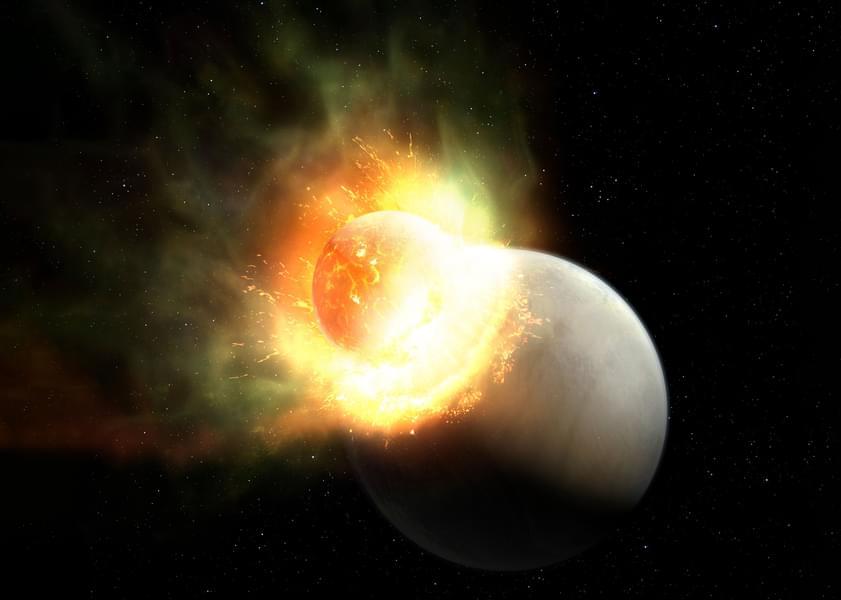Such planetary smashups are likely common in young solar systems, but they haven’t been directly observed.
Young planetary systems generally experience extreme growing pains, as infant bodies collide and fuse to form progressively larger planets. In our own solar system, the Earth and moon are thought to be products of this type of giant impact. Astronomers surmise that such smashups should be commonplace in early systems, but they have been difficult to observe around other stars.
Now astronomers at MIT, the National University of Ireland Galway, Cambridge University, and elsewhere have discovered evidence of a giant impact that occurred in a nearby star system, just 95 light years from Earth. The star, named HD 172,555 is about 23 million years old, and scientists have suspected that its dust bears traces of a recent collision.
The MIT-led team has observed further evidence of a giant impact around the star. They determined that the collision likely occurred between a roughly Earth-sized terrestrial planet and a smaller impactor at least 200,000 years ago, at speeds of 10 kilometers per second, or more than 22,000 miles per hour.
